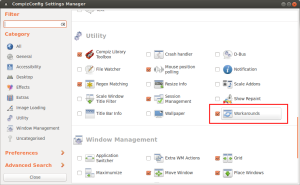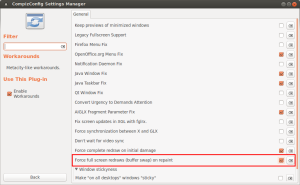 I use Ubuntu as my main desktop operating system, together with Gnome Fallback/failsafe, because I dislike Unity and want to keep my Gnome 2 desktop.
I use Ubuntu as my main desktop operating system, together with Gnome Fallback/failsafe, because I dislike Unity and want to keep my Gnome 2 desktop.
This might not be relevant to the problem, but when I upgraded from 14.4 to 16.4, I lost my sound card. When the computer booted, I would get the Ubuntu drums, but once I logged in, the only sound I had came out of my USB headphones. I no longer saw my Intel HDA soundcard listed in the gnome sounds settings.
After a lot of digging I eventually worked out the cause of the problem, and a temporary fix. Long story short, pulseaudio couldn’t detect the sound card, because Ubuntu have changed the way it’s loaded.
You need to therefore reload the detection libraries and restart pulseaudio, run the following command:
pactl load-module module-detect&
Now, I have a startup script that I run as part of my user login to set up my desktop environment and kick of my development environment, so it was enough for me to put this command in that script.
You will probably want to make sure you load this module in your pulseaudio init scripts. Anyway, hope this helps.
 I got a little bit of time recently, so I’ve updated the Known vagrant build.
I got a little bit of time recently, so I’ve updated the Known vagrant build.


 I use Ubuntu as my main desktop operating system, together with Gnome Fallback/failsafe, because I dislike Unity and want to keep my Gnome 2 desktop.
I use Ubuntu as my main desktop operating system, together with Gnome Fallback/failsafe, because I dislike Unity and want to keep my Gnome 2 desktop.

